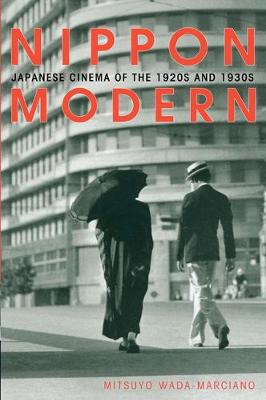A Choice Outstanding Academic Title
Nippon Modern is the first intensive study of Japanese cinema in the 1920s and 1930s, a period in which the country's film industry was at its most prolific and a time when cinema played a singular role in shaping Japanese modernity. During the interwar period, the signs of modernity were ubiquitous in Japan's urban architecture, literature, fashion, advertising, popular music, and cinema. The reconstruction of Tokyo following the disastrous earthquake of 1923 high lighted the extent of this cultural transformation, and the film industry embraced the reconfigured space as an expression of the modern. Shochiku Kamata Film Studios (1920-1936), the focus of this study, was the only studio that continued filmmaking in Tokyo following the city's complete destruction. Mitsuyo Wada-Marciano points to the influence of the new urban culture in Shochiku's interwar films, acclaimed as modan na eiga, or modern films, by and for Japanese.
Wada-Marciano's thought-provoking examinations illustrate the reciprocal relationship between cinema and Japan's vernacular modernity-what Japanese modernity actually meant to Japanese. Her thorough and thoughtful analyses of dozens of films within the cultural contexts of Japan con tribute to the current inquiry into non-Western vernacular modernities.
- ISBN10 0824863747
- ISBN13 9780824863746
- Publish Date 22 January 2008
- Publish Status Active
- Imprint University of Hawaii Press
- Format eBook
- Pages 224
- Language English
